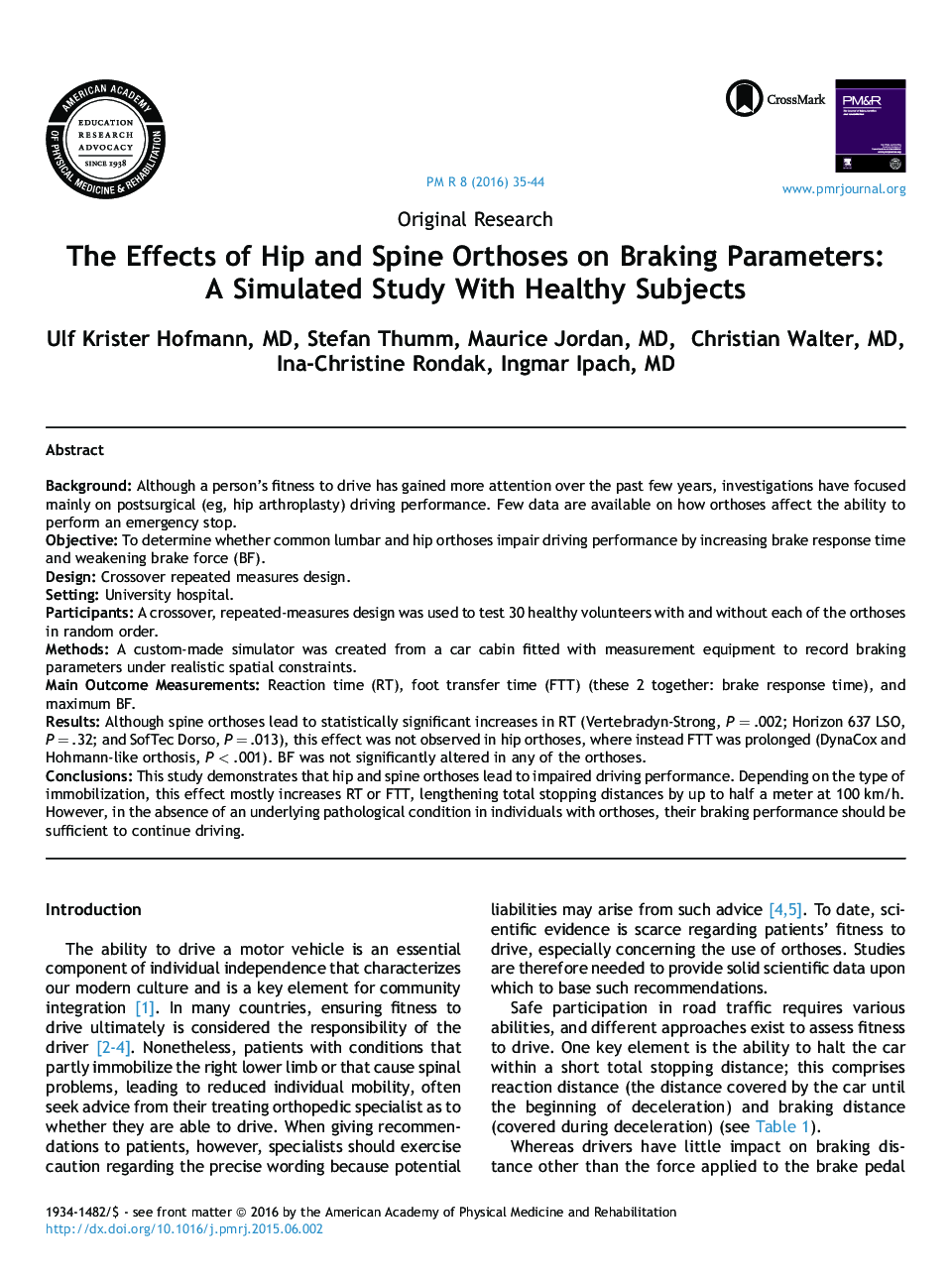| کد مقاله | کد نشریه | سال انتشار | مقاله انگلیسی | نسخه تمام متن |
|---|---|---|---|---|
| 5874187 | 1144702 | 2016 | 10 صفحه PDF | دانلود رایگان |
BackgroundAlthough a person's fitness to drive has gained more attention over the past few years, investigations have focused mainly on postsurgical (eg, hip arthroplasty) driving performance. Few data are available on how orthoses affect the ability to perform an emergency stop.ObjectiveTo determine whether common lumbar and hip orthoses impair driving performance by increasing brake response time and weakening brake force (BF).DesignCrossover repeated measures design.SettingUniversity hospital.ParticipantsA crossover, repeated-measures design was used to test 30 healthy volunteers with and without each of the orthoses in random order.MethodsA custom-made simulator was created from a car cabin fitted with measurement equipment to record braking parameters under realistic spatial constraints.Main Outcome MeasurementsReaction time (RT), foot transfer time (FTT) (these 2 together: brake response time), and maximum BF.ResultsAlthough spine orthoses lead to statistically significant increases in RT (Vertebradyn-Strong, P = .002; Horizon 637 LSO, PÂ = .32; and SofTec Dorso, P = .013), this effect was not observed in hip orthoses, where instead FTT was prolonged (DynaCox and Hohmann-like orthosis, P < .001). BF was not significantly altered in any of the orthoses.ConclusionsThis study demonstrates that hip and spine orthoses lead to impaired driving performance. Depending on the type of immobilization, this effect mostly increases RT or FTT, lengthening total stopping distances by up to half a meter at 100 km/h. However, in the absence of an underlying pathological condition in individuals with orthoses, their braking performance should be sufficient to continue driving.
Journal: PM&R - Volume 8, Issue 1, January 2016, Pages 35-44
